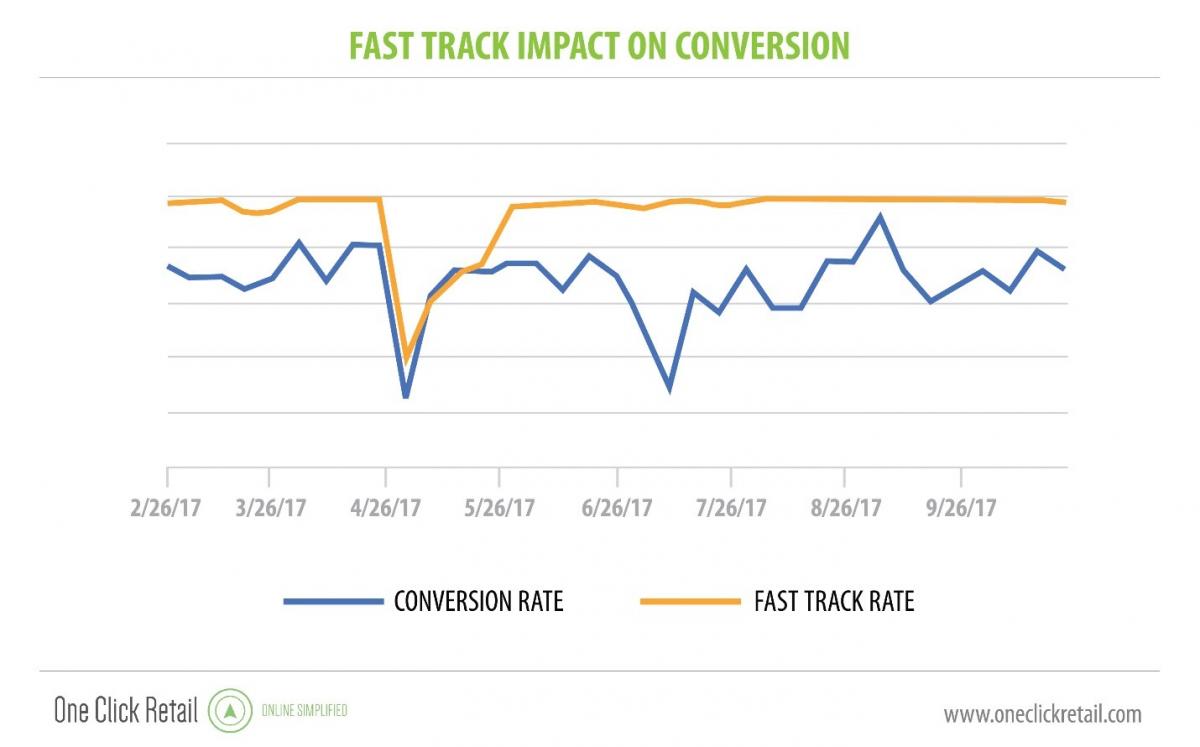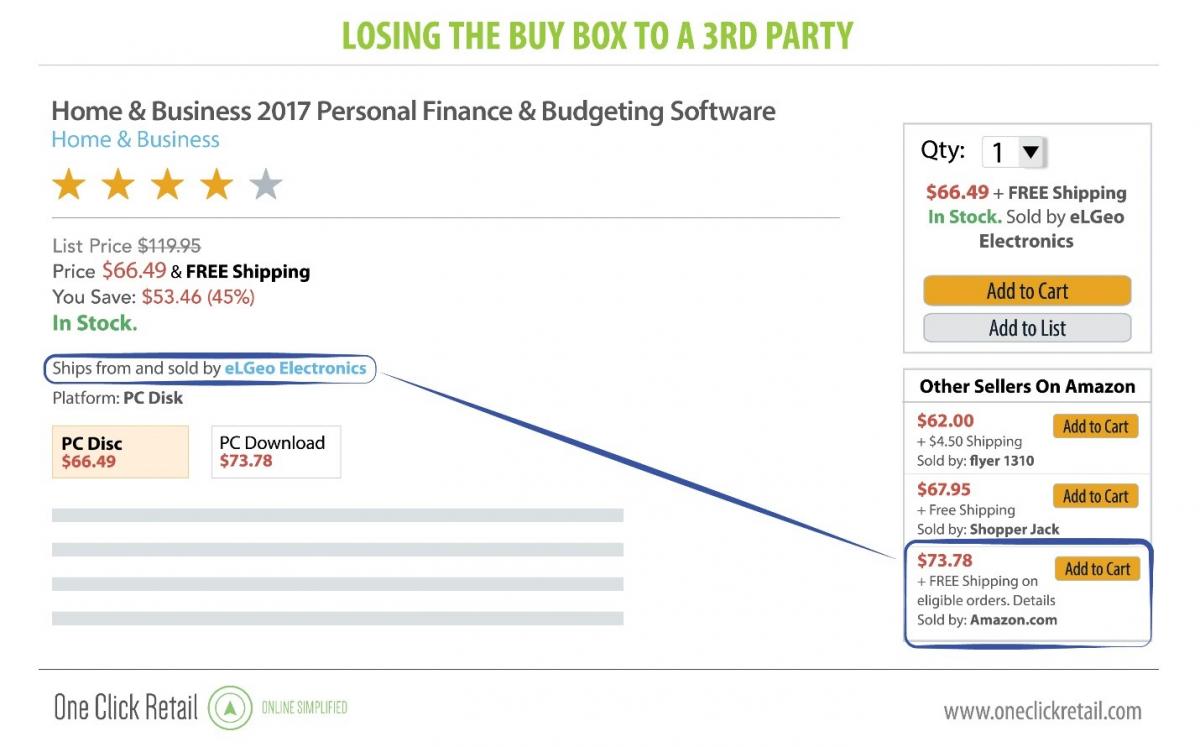By Chad Widdison, Insights Manager
Amazon Prime is a powerful thing. Amazon does not release data on Prime membership, but with 2017 estimates ranging from 60 to 90 million household and Amazon saying that “More new paid members joined Prime in 2017 than any previous year—both worldwide and in the US” in their quarterly earnings statement released February 1st, it's not a stretch to suggest that Amazon Prime may have already broken the 100 million members threshold.
With so many American households benefitting from Amazon Prime, brands have the opportunity to leverage Prime as a competitive advantage. Today, we're going to introduce you to the concept of Fast Track and how it can be used to transform a good product into a bestseller.
What is Fast Track?
When you're browsing Amazon, you will see a checkmark and the word "Prime" alongside many items on the search results page. Fast Track measures the percent of customers that see an item as Prime Eligible.
Simply put, Prime Eligible items are those that qualify for free two-day shipping. Whether or not an item is considered eligible for Prime is measured by Fast Track – a metric that takes into account an item's in-stock rate, control of the Buy Box, and the conditions in which the item arrives at Amazon's fulfillment center.
The higher your Fast Track rate, the more shoppers see your item as Eligible for Prime.
Why is this Important?
You may be tempted to ask whether Prime eligibility is really that important – it is. Due to a combination of consumer preference for Prime items and Amazon ranking Fast Tracked items higher in search results, this metric has a huge impact on your conversion.
For example, we've charted the relationship between Fast Track and conversion for a popular personal care ASIN on Amazon that generated nearly $2 million in sales last year:

As you can see, a declining Fast Track rate causes conversion to drop immediately in response.
Regardless of how much traffic you can drive with marketing dollars, Amazon customers who browse your products are more likely to choose an option that offers free two-day shipping. Prime eligibility is a key factor – because if Amazon customers aren’t converting, you’re wasting money.
Improve your Fast Track
You can increase your Fast Track rate by manipulating the three key metrics: improving your in-stock rate, winning the Buy Box, and ensuring your products are Prime pickable (ie. there are no issues with your items upon arrival at Amazon’s fulfillment center).
- In-Stock
It's no mystery that if an item is out of stock it can't be delivered in two days. Brands can prevent this from happening by understanding how Amazon's ordering system works. Amazon product orders are automated but there are ways for you to guide that system if you believe there is a risk of going out of stock.
First, you should give Amazon advanced notice of all upcoming promotions and marketing campaigns for your products, which will allow the system to increase the size of their orders ahead of high-sales periods.
Next, you should make every effort to shorten your Vendor Lead Time. VLT is the duration between Amazon placing a purchase order and your items being received by their fulfillment center. The shorter your VLT, the less likely you are to go out of stock due to delays in delivery.
If you've done both of the above and are still having trouble staying in stock, you can also try negotiating with Amazon in order to convince them to keep more stock on hand, but that is ultimately up to them.
- Buy Box
When you’re a first-party seller, you expect that Amazon will prioritize your items over identical products supplied by third-party resellers. But Amazon will cede an item's Buy Box to a 3P if it is more profitable to them, such as in the example below.

In this example, the 3P seller has lowered their price so much that it's more profitable for Amazon to let them have the sale than to try to compete with them on price. This means that as Amazon's supplier, your item sits on the shelf in the fulfillment center while a 3P reseller gets the sale. In order to prevent your products from losing the Buy Box, you can:
- Increase Amazon's profitability by using marketing spend or straight pays, which allows Amazon to more profitably match a 3P's lower price thanks to your subsidy; or
- Choke out the 3P seller's inventory.
Resellers can obtain your inventory by purchasing large quantities at a discount from other retailers or during promotional periods. Introducing per-customer purchase limits during promotions can help to weed out the bad actors and limit 3P competition.
For example, we discovered that one of our clients had a significant uptick in Amazon 3P sales that was directly correlated to steep discounts offered on their own company website. Soon after they introduced the discount, there were eight different 3P sellers undercutting their prices on Amazon and they could not win back the Buy Box.
In some cases, 3P sellers obtain their inventory through theft from other retailers, off the back of trucks, and even from Amazon fulfillment centers. This may be more difficult to track down, but ensuring a clean channel and reducing 3P competition is critical to improving your Fast Track.
- Prime Pickable
In Amazon's fulfillment centers, items are organized for "pickability". To be Eligible for Prime, an item needs to be in a location which makes it easy for workers to have it shipped to the customer within two days. If there are any issues with the condition of the product as it is received by the fulfillment center, it creates delays while Amazon reviews the item.
To keep your products stored in a Prime Pickable location, stay on top of your operational and chargeback reports in Amazon Vendor Central to catch any possible issues and make sure your items are compliant with Amazon's standards.
Following these guidelines will help your brand stay on the Fast Track. Amazon has signed up more new Prime members every year since its inception, and even for non-members the Prime checkmark conveys a sense of trust to consumers that this product is not a knock-off – that it is "endorsed" by Amazon. Keeping your Fast Track rate high increases the percentage of shoppers who will see that checkmark next to your products and radically increase your conversion.
One Click Retail is the industry’s most accurate source of sales data for the world’s top eCommerce marketplaces. Using a combination of website indexing, machine learning and proprietary software, OCR estimates weekly online sales figures with market leading accuracy in order to deliver the best insights, analytics and strategies to their brand manufacturer clients. To catch a glimpse of how OCR gives brands critical edge on online platforms with our unique data and expertise, subscribe to our weekly eCommerce insights blog, and follow us on Twitter and LinkedIn.
If you are a brand manufacturer who would like to learn more about how you stack up to the competition—or would like to see your market share and category growth insights—email us at info@oneclickretail.com for a free capabilities demo.



